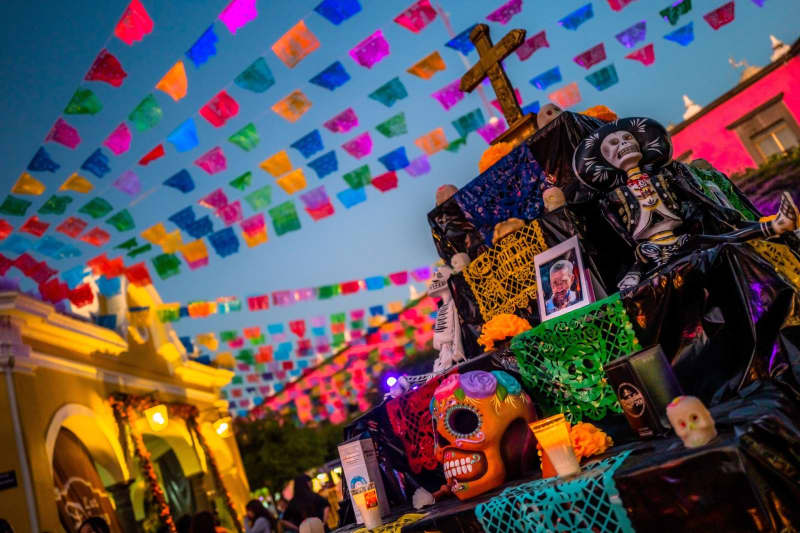
El Día de los Muertos, or Day of the Dead, is celebrated every year on November 2.
The tradition that originated in Mexico invites families to welcome back the souls of their deceased loved ones.
According to a report from the University of the state of Hidalgo, Mexico, dating back to pre-Hispanic times, indigenous cultures in Mexico viewed death as a passage to the Mictlán, the realm of the dead. Indigenous beliefs assigned afterlife destinations based on death type, contrasting Catholicism’s moral-based heaven or hell.
Spanish colonization merged indigenous and Catholic traditions, creating a unique Mexican Catholicism evident in the Altar de Muertos, the report says.
An altar typically consists of two to seven levels, symbolizing the journey of life and the afterlife. Each level hosts distinct elements that reflect the spirit’s journey, such as sacred symbols and offerings.
Offerings and their significance
The most common altars are two levels, representing heaven and earth; in contrast, three-level altars add the concept of purgatory to this view. Meanwhile, a seven-level altar symbolizes the steps needed to reach heaven and rest in peace.
Offerings typically contain various elements and symbols that invite the spirit to travel from the world of the dead to spend the day with their loved ones, according to the report.
On the first level, images of the deceased are placed at the top of the altar facing away, with a mirror in front, so the deceased can only see their loved ones’ reflection, and vice versa.
The second level is meant for the souls in purgatory to obtain permission to leave.
The third holds salt, symbolizing the purification of the spirit for children in purgatory.
On the fourth, the central element of the Día de Muertos celebration, bread, is placed as an offering to the souls that pass by. Representing the eucharist, it was introduced by Spanish evangelists, shaped as “muertito” or round domes, adorned with cross-like bone figures and coated with sugar and anise.
The fifth level holds the deceased’s favourite foods and fruits that are offered for their enjoyment. On the sixth level, photographs of the deceased with their loved ones, to whom the altar is dedicated, are displayed.
Finally, on the seventh level, a cross made of seeds or fruits, like tejocote (Mexican hawthorn) and lime, is placed. The cross, introduced by Spanish evangelists, is used in all altars to blend Catholic teachings with indigenous practices. It’s placed near the picture of the deceased, made of salt or ash.
Decorations
Additionally, other optional elements are added to the altar for decoration.
Papel Picado: This cut paper symbolizes the celebratory spirit of Día de los Muertos and represents the wind.
Candles and Lanterns: Considered as guiding lights in this world, they are traditionally purple and white for mourning and purity. Candles may be arranged according to the cardinal points, with lanterns forming a path to the altar.
Water: Symbolizing the purity of the soul and life’s regeneration, a glass of water quenches the spirit’s thirst after travelling from the afterlife. It can be accompanied by soap, a towel and a mirror for the deceased’s clean-up.
Flowers: Customary altar and grave decorations, marigold flowers guide spirits with their scent.
Skulls: Sugary or ceramic skulls are spread across the altar, symbolizing death’s presence.
Alcoholic Beverages: Drinks like tequila, pulque or mezcal are placed as “shots” favoured by the deceased.
Personal Items: Belongings of the deceased are included to help the spirit recall their earthly life. For children, favorite toys are displayed.
EMEA Tribune is not involved in this news article, it is taken from our partners and or from the News Agencies. Copyright and Credit go to the News Agencies, email news@emeatribune.com Follow our WhatsApp verified Channel




